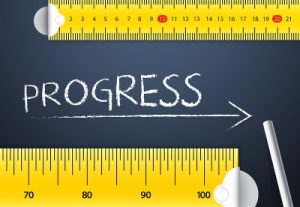
The latest Federal Information Technology Acquisition Reform Act (FITARA) scorecard, released in September, showed dramatic improvements in the progress agencies have made towards meeting IT modernization goals. The overall grades of 18 of the 24 tracked agencies increased, while grades for the remaining six agencies were unchanged. Per the scorecard,13 agencies now have an overall 'A,' 10 have a 'B,' and only one agency--the Energy Department--has a grade of 'C.' The Department of Health and Human Services and the Department of State showed the greatest improvements, with both agencies' grades moving from 'D's to 'A's.
The grading categories, unchanged from the previous report, measured agency CIO authority enhancements; CIO investment evaluation; cloud computing; modernizing government technology; cybersecurity; and progress transitioning from legacy contracts to the GSA's newer Enterprise Information Solutions (EIS) contract. Improvements in the categories of cloud computing, cybersecurity, and EIS transition contributed to higher scores.
Cybersecurity
Seven agencies improved their cybersecurity grades since the last scorecard, with Homeland Security making the biggest jump, moving from a 'C' to an 'A.' Scores in this category are tied to meeting the maturity measurements in the 2014 Federal Information Security Modernization Act.
With so many agencies scoring high when measured to a 10-year-old standard, many argue that it is time to attach new measurements to this category, perhaps using the milestones described in the Executive Order on Improving the Nation's Cybersecurity, as well as Zero Trust goals.
Cloud Computing
Unlike cybersecurity, cloud computing is a very new addition to the scorecard, first measured in FITARA 17. In that edition of the scorecard, only one agency earned an 'A' in cloud computing--but in this report, eight agencies scored an 'A' grade.
Even though it is a newer category, changes are already being discussed including adding a review of Federal Risk and Authorization Management Program (FedRAMP) compliance.
EIS Transition
A move to the General Services Administration's Enterprise Infrastructure Solutions (GSA EIS) is included in the report because that contracting vehicle provides access to the technologies agencies need today and will need in the future, including cloud services, cybersecurity, and mobile solutions. Agencies had previously been slow to move to the contract, which hampered their ability to acquire modern technology solutions with modern procurement methods.
In this latest scorecard, 14 agencies won higher grades for EIS transition, with four agencies--Housing and Urban Development, State Department, Veterans Affairs, and Environmental Protection Agency--making the jump from 'F' to 'A' grades. An 'A' in this category means that the agency has achieved 100% transition. Soon, this category may be sunsetted, much like a data center consolidation category was when nearly every agency achieved compliance in that.
GovEvents and GovWhitePapers have a host of resources to guide agencies on their modernization journey.
- Imagine Nation ELC 2024 (October 27-29, 2024; Hershey, PA) - This event brings together the government technology community to discuss the issues facing government and work together to develop practical solutions and innovative strategies.
- Federal News Network's Industry Exchange Cloud 2024 (November 18, 2024; webcast) - Join the event to learn about the best tools, tactics, and techniques to help achieve effective, efficient, and secure cloud services.
- ATARC's Public Sector Summit (December 18, 2024; Reston, VA) - This event unpacks the multifaceted challenges inherent in government modernization. Panels will share insights on legacy systems migration, meeting cybersecurity imperatives, implementing AI, and more.
- Overcoming Internal Roadblocks to Infrastructure Modernization (white paper) - Successful modernization involves both human and technology elements--people, culture, processes, and systems. Federal experts discuss the various roadblocks interfering with modernization efforts and the strategies agencies are using to overcome them.
- Modernizing Securely in the Cloud for Mission Impact (white paper) - As new security threats emerge, and tech stacks get more complex, protecting sensitive data presents a challenge for Federal Government agencies tasked with meeting and maintaining security and regulatory requirements. Learn how to update policies and adopt technology that meets the National Institute of Standards and Technology's security controls to protect data.
- Modernize and Automate your Agency's Service Management (white paper) - Enterprise Service Management extends traditional Information Technology Service Management processes and tools across an organization to all teams. It defines operational best practices for both internal teams and their stakeholders, while removing organizational silos to deliver intuitive, cost-effective solutions that supercharge service delivery for employees and citizens.
Find additional government IT modernization events and resources on GovEvents and GovWhitePapers.




